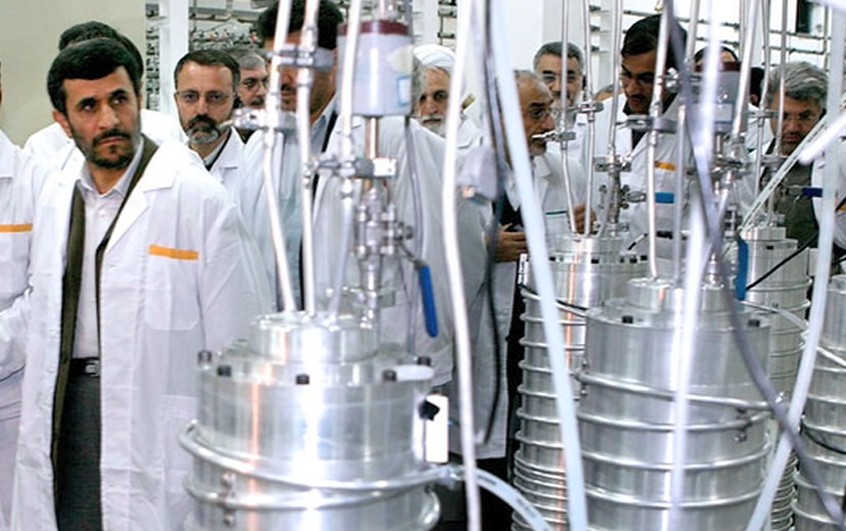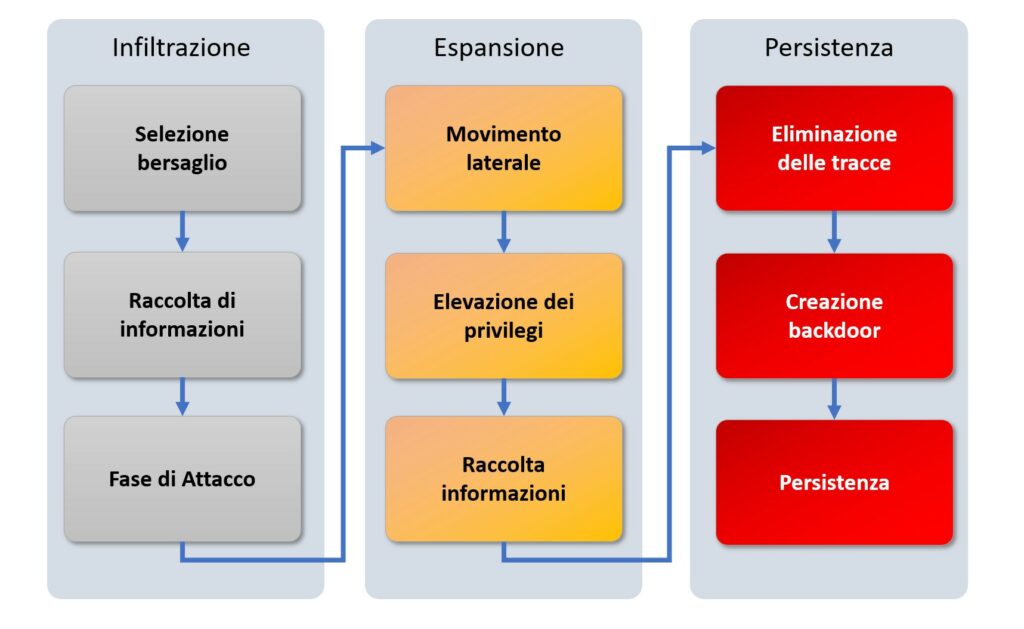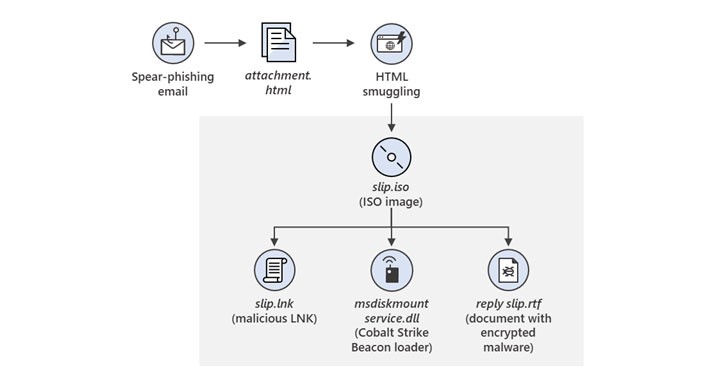
Advanced Persistent Threats (APTs) are malicious actors that operate in the shadows of the internet, conducting highly sophisticated and targeted attacks. These groups, often associated with nation-states, pose a significant threat to cybersecurity globally.
This article aims to shed light on the complex world of APTs, analyzing in detail who they are, what drives them, and how they operate. Through several chapters, we will explore the fundamentals of APTs, from the motivations that drive them to understanding their advanced tactics and how organizations can defend themselves against these pervasive threats. Our journey will take us from the identification of APTs to the legal and diplomatic implications of this category of sophisticated cyberattacks.
In the next chapter, we’ll examine the essence of APTs, defining who they are and what makes them such a formidable threat. Through this initial overview, we lay the foundation for a deeper understanding of this ever-evolving world.
Advanced Persistent Threats (APTs for short) are one of the most insidious forms of cyber threats in the cybersecurity landscape. Known for their ability to operate silently, persistently, and targeted, these malicious actors pose a serious concern for organizations around the world.
To better understand who APTs are and what their relevance is, it is essential to start with a solid introduction to this fearsome category of threats.
Advanced Persistent Threats, translated into Italian as “Advanced Persistent Threat,” are groups of highly sophisticated hackers, often associated with state entities or highly organized criminal groups. The distinctive feature of APTs is their ability to operate persistently within computer networks, with the aim of gaining unauthorized access, collecting sensitive information, or conducting targeted attacks. “Persistence” refers to the fact that APTs work over the long term, often remaining within a network for extended periods, thus evading detection.
To fully understand the threat posed by APTs, it is crucial to know some of their key characteristics:
The history of APTs dates back to the 1990s, but it is in the last two decades that they have begun to raise significant concerns. Some of the most notorious APT attacks include Stuxnet, a malware that targeted uranium enrichment centrifuges, inside Iran’s Natanz nuclear power plant, and NotPetya, an attack that caused widespread damage globally.

Advanced Persistent Threats (APTs) are known for their precise targeting and well-defined targets. Understanding the motivations behind APT attacks is critical to recognizing the scope of the threats they pose and developing effective defense strategies. In this chapter, we’ll explore common APT attack targets and the motivations that drive them.
APTs target specific individuals ranging from government organizations to private companies in key industries. Here are some of the most common APT attack targets:

The motivations behind APT attacks APTs drive vary depending on the actors involved. Some of the most common motivations include:
Understanding the motivations behind APT attacks is crucial to developing appropriate defense strategies. In the next chapter, we will examine the interconnections between nation states and cybercrime groups.

Understanding the dynamics between nation-states and cybercriminal groups is essential to assessing the scope and complexity of Advanced Persistent Threats (APTs). In this chapter, we will examine the fundamental differences between these two categories of actors and how they interact in the cybersecurity world.
Nation-states are one of the main actors behind APTs. These attacks are often conducted or sponsored by governments and government agencies. Here are some of the key characteristics of nation-states as APT actors:
Cybercriminal groups, on the other hand, are often motivated by profit. These groups seek financial gain through illegal online activities. Some of their characteristics include:
It’s important to note that, in some cases, nation-states can leverage or collaborate with cybercriminal groups to achieve their goals. This makes the cybersecurity landscape even more complex, as the lines between state and criminal actors can blur.
Understanding the dynamics between nation-states and cybercriminal groups is crucial to developing effective defense strategies against APTs. In the next chapter, we will look at the most well-known APT groups.

Advanced Persistent Threats (APTs) are often associated with specific groups that stand out for their tactical techniques and procedures (TTPs), resources, and persistence in their operations. In this chapter, we will examine some of the most notorious APT groups and their notable attacks over the years.
These are just some of the known APTs in the cybersecurity landscape. Attacks conducted by these groups have had a significant impact on government organizations, businesses, and individuals around the world, and as you can see, all highly industrialized states have interconnected factions. In the next chapter, we’ll examine the phases of an Advanced Persistent Threat attack.
Advanced Persistent Threats (APTs) are known for their ability to conduct sophisticated attacks that progress through several phases, each of which contributes to the success of the APT operation. In this chapter, we will examine the key phases of an APT attack: infiltration, expansion and persistence.

The infiltration phase represents the beginning of the APT attack, in which attackers attempt to gain unauthorized access to a target network or system. This phase includes:
Once inside the target network, attackers move to the expansion phase. During this phase, they attempt to gain greater control and access to the network to achieve their goals. This phase includes:
The persistence phase is the final stage where attackers try to maintain access and control over the network in the long term. This is what makes APTs “persistent.” This phase includes:
Understanding these phases of an APT attack is crucial to developing effective defense strategies. In the next chapter, we’ll look at best practices for defending against APTs and how organizations can protect themselves from these sophisticated threats.

The Advanced Persistent Threats (APTs) pose a serious and persistent threat to cybersecurity. To protect against these highly sophisticated threats, organizations must adopt a wide range of defense methods. In this chapter, we will examine some of the main defense methods against APTs and evaluate the effectiveness of endpoint detection and response (EDR) tools in this fight.
Endpoint detection and response (EDR) tools play a crucial role in protecting against APTs. These tools are designed to monitor and protect endpoint devices within a network, such as computers and mobile devices. Here’s how EDR helps defend against APTs:
To protect against APTs, organizations must adopt a multi-layered security strategy that includes:
User education is a critical aspect of defending against APTs. Users must be trained to recognize signs of potential threats, such as phishing emails or suspicious links. User awareness is a key element in preventing attacks.
Continuous monitoring of networks and endpoints is essential. Real-time data analysis and threat detection allow you to take prompt action against APT attacks before they cause serious damage.
Restricting access to resources to authorized users based on their roles reduces the opportunities for attackers to move laterally within the network.
In summary, EDR tools play a crucial role in defending against APTs, but they must be part of a complex security strategy that includes multiple preventative and reactive measures. Constant monitoring, user education, and rapid response are key to minimizing the risk of a successful APT attack.

Advanced Persistent Threats (APTs) pose a threat that goes far beyond the world of technology and cybersecurity. APT operations can have serious legal and diplomatic implications, as they often involve nation-states, government organizations, or international entities. In this chapter, we will examine the complex legal and diplomatic implications of APTs.
One of the main legal hurdles in dealing with APTs is attribution, or the ability to positively identify the perpetrators of an APT attack. APT attackers often try to hide their identity through advanced obfuscation techniques. This can make it difficult to establish responsibility for an attack.
When APTs are attributed to a nation-state or a specific entity, victims may seek legal action against those responsible. These actions may include filing complaints at the national level or with international organizations, although the accused often consistently reports the allegations as false.
Although there is no binding international treaty yet, there are international conventions (such as the Tallinn Manual 2.0 or the Budapest Convention on Cybercrime) that regulate the behavior of nation-states in the matter of cyber-attacks. For example, international law stipulates that states should refrain from conducting attacks that damage other states’ critical infrastructure or interfere with their political operations.
In the context of APTs, there are international norms of conduct that outline acceptable and unacceptable behavior in cyberspace, although nothing is agreed upon unilaterally. These rules are still evolving and are the subject of diplomatic discussions, although efforts have been made towards a regulation of cyberspace.
Victims of APT attacks may seek to take active defense measures, for example by searching for vulnerabilities in the attacker’s system or neutralizing threats. These actions can trigger retaliation and further complicate diplomatic implications.
Retaliatory actions can result in a cycle of escalation, with retaliation by the aggressor and further active defensive measures. This can have serious diplomatic consequences.
Victims of APT attacks can take diplomatic action, such as reporting the attack to the relevant authorities or trying to resolve the issue through bilateral or multilateral negotiations.
Diplomacy is often the preferred way to deal with the implications of APT attacks, as it aims to resolve disputes peacefully and through negotiations.
However, let us always remember that the fifth domain after land, sea, sky and space, is the extension of the latter, known to all as cyberspace, and was declared in 2016 by NATO as the “Operational Domain”. This is therefore a reason for a possible reference to the cthe collective defense clause present in Article 5. This article states that an “armed attack” against one or more allies is considered as an attack against any NATO component and therefore each of them can, according to the right to self-defense enshrined in Article 51 of the UN Charter, decide on the actions it deems necessary to “restore and maintain security”, including “the use of armed force”.
APTs can undermine international relations between states, causing tension and mutual distrust. APT attacks can lead to growing suspicion between states and complicate diplomatic relations. The implications of APT operations can have long-term repercussions on relations between states and international organizations.
In summary, APTs are not only a technological threat, but also a complex issue with legal and diplomatic implications. Managing APTs requires a combination of cybersecurity measures, international cooperation, and diplomacy to address the challenges these threats pose.

Advanced Persistent Threats (APTs) are an ever-evolving threat, and as a result, their attack trends are constantly shifting. To address this evolving challenge, it is important to recognize emerging trends in APT cyber attacks. In this chapter, we will examine some of the most relevant and cutting-edge trends in this field.
APT attackers are increasingly leveraging artificial intelligence (AI) and machine learning (ML) to make their attacks more sophisticated and difficult to detect. AI can be used to automate the infiltration process, discover new vulnerabilities, and adapt to security countermeasures.
The Internet of Things has become an increasingly attractive target for APTs. Often less secure IoT devices, such as surveillance cameras and network devices, can be compromised and used as access points for corporate networks.
APTs are combining multiple attack techniques into a series of coordinated actions, thus creating more complex chain attacks. These attacks can start with a phishing campaign, progress to a vulnerability exploit, and culminate in data infiltration and theft.

Social engineering continues to be an effective attack vector for APTs. Attackers are increasingly relying on sophisticated phishing messages and targeted deceptions to trick users into revealing sensitive information or clicking malicious links.
APTs are developing increasingly evasive malware that can avoid detection by traditional antivirus software. This may involve using evasion techniques, such as dynamic signatures, to remain hidden.
APTs continue to exploit zero-day vulnerabilities, which are previously unknown software vulnerabilities, to conduct attacks. These attacks are particularly difficult to defend against because there are no known patches or countermeasures.
APTs continue to focus on key industries, such as energy, defense, and healthcare. These sectors are often attractive targets due to the sensitive information they contain.
In our exploration of Advanced Persistent Threats (APTs), several key conclusions emerge that underscore the importance of addressing these threats with great care and awareness.
APTs are called “persistent” for a reason. Their determination to achieve their goals is remarkable, and they can continue to operate within a network for long periods without being detected. They can come from a variety of sources, including nation-states, cybercriminal groups, and ideologically motivated actors. This diversity of actors makes APTs an even more complex threat to address.
These attackers use advanced techniques, including targeted phishing, social engineering, evasive malware, and the use of zero-day vulnerabilities. These tactics require highly sophisticated security measures to be detected and addressed immediately. Furthermore, they go beyond the world of technology and cybersecurity, having significant legal and diplomatic implications. Attribution of attacks and international responses are complex challenges.
In conclusion, addressing APT threats requires a combination of advanced technology, multi-layered security strategies, user education, international cooperation, and high technical skills. Remaining vigilant and ready to face the ever-evolving challenges of APTs is essential to protecting organizations. Therefore, Collaboration and Sharing represent, as usual, the winning model even for this highly technological challenge of today’s world.
Follow us on Google News to receive daily updates on cybersecurity. Contact us if you would like to report news, insights or content for publication.
